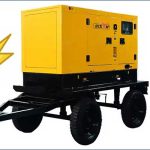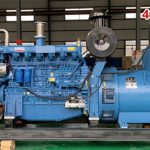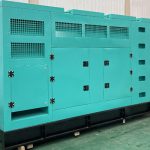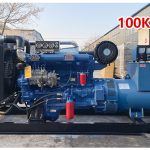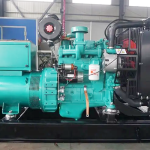The main reason for diesel generator black smoke exhaust is that the fuel mixture is too rich, the formation of the combustible mixture is poor or the combustion is not perfect. Diesel is a complex hydrocarbon. The unburned diesel injected into the combustion chamber is decomposed by high temperature to form carbon black. When exhausted, it is discharged together with the exhaust gas to form black smoke. Black smoke is a product of incomplete combustion, which is released and polymerized during the cracking process of hydrocarbon combustion under the condition of high temperature and oxygen deficiency.
Under high-temperature and high-pressure combustion conditions, the diesel engine will form small solid particles with carbon as the main component formed by partial oxygen deficiency, cracking, and dehydrogenation, which is a manifestation of incomplete combustion of fuel in the combustion chamber. Due to the heterogeneous combustion of the diesel engine, the chemical reaction conditions in each area of the combustion chamber are inconsistent and change with time, so black smoke is likely to be produced in many different ways.
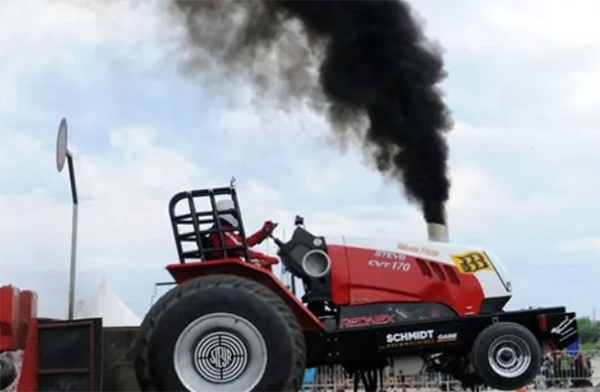
In some cases, fuel is sprayed on the wall of the combustion chamber to form a liquid oil film. The oil film is the last part to evaporate. Its combustion depends on its evaporation rate and the mixing rate of fuel vapor and oxygen. If the concentration of oxygen in the surrounding gas is too low, or the speed of mixing is not enough, the fuel gas evaporated from the oil film will be decomposed, and unburned hydrocarbons, incomplete oxidation products, and black smoke will be produced.
The generation of black smoke during diesel engine combustion can be summarized into three stages-nucleation stages, single particle stage, single particle combustion disappears, or agglomerates into larger flocs. The main reasons affecting its generation are as follows.
1. Piston rings, cylinder liners, etc. are worn. After the valves, piston rings, and cylinder liners are worn out, the compression pressure is insufficient and the engine oil is blown up. In the combustion test, the negative cylinder is at the end of the compression stroke. In combustion under oxygen conditions, the combustion process is prone to carbon deposits, and the exhaust gas forms a large amount of black smoke.
2. The shape of the combustion chamber changes. The technical condition of the combustion chamber declines due to manufacturing quality and long-term use, so that the compression gap is too large, too small, and the piston position is installed incorrectly, which will change the shape and volume of the combustion chamber, thereby affecting the mixing of fuel and air. Quality, so that fuel combustion conditions are worse.
3. The fuel injector is not working well. The exhaust smoke of the diesel engine is closely related to the atomization quality of the fuel. The diameter is 4-5 times larger than the oil droplets in the main injection stage (the volume is about 100 times larger), the evaporation and combustion time of these oil droplets is short, the concentration of oxygen around is low, and it is easy to generate soot.
The fuel injector is not atomized, poorly atomized, or dripping oil, so the fuel cannot be fully mixed with the air in the cylinder and cannot be completely burned.
The phenomenon of black smoke emission caused by the poor work of the injector is more obvious when the diesel engine is running at low speed. Since the intake vortex in the cylinder is weaker at low speed, the possibility of oil droplets or oil beams being dispersed by the airflow is reduced and the staying time is longer. Longer, easier to form carbon black discharge.
4. Excessive fuel supply If the fuel supply is too large, the amount of fuel entering the cylinder will increase, resulting in incomplete combustion of fuel with more oil and less gas.
In addition, heavy workload, poor fuel quality, and low operating temperature will also cause black smoke from the exhaust. The pyrolysis reaction of fuel in diesel engines is inevitable, especially in diesel engines with space-mixed combustion. The liquid oil droplets create favorable conditions for the cracking reaction, so a large number of carbon particles are produced in the early stage of combustion, which has been confirmed by high-speed photography of the combustion process.
When the diesel engine is in normal combustion, before the exhaust valve is opened, a large number of carbon particles formed in the early stage of combustion can be basically burned out, and the exhaust gas is basically smokeless. It’s just that under some unfavorable working conditions, the carbon particles cannot be burned in time but are reunited and adsorbed, forming larger soot particles or flocs in the cylinder and during the exhaust process, causing the exhaust to emit black smoke.
5. Improper adjustment of fuel supply advance angle
(1) The fuel supply advance angle is too large, and the fuel is injected into the combustion chamber too early. Because the pressure and temperature in the cylinder are low at this time, the fuel cannot be ignited and burned. In a direct injection diesel engine, when other parameters remain unchanged, increasing the fuel injection advance angle can reduce exhaust smoke.
Because increasing the fuel injection advance angle will lengthen the combustion delay period, increase the amount of fuel injected into the cylinder before ignition, increase the amount of premixed gas, increase the amount of premixed gas, accelerate the combustion speed, and end the combustion earlier so that the main combustion The formation of carbon particles in the early stage has a higher temperature and a longer residence time at high temperature, which is conducive to the oxidation and disappearance of carbon particles.
However, premature fuel injection increases the amount of premixed fuel, making the diesel engine work rough, increasing combustion noise, causing greater mechanical load, and more black smoke (COX) emissions.
(2) The fuel supply advance angle is too small, the fuel injected into the cylinder is too late, and a part of the fuel is separated or discharged before it can form a combustible mixture, causing part of the fuel to discharged with the exhaust gas in the exhaust pipe to be pyrolyzed and burned, the formation of black smoke is discharged together with the exhaust gas.






